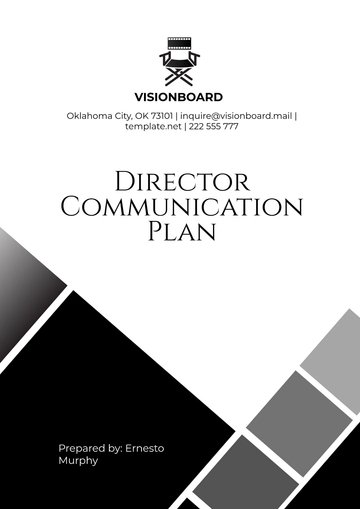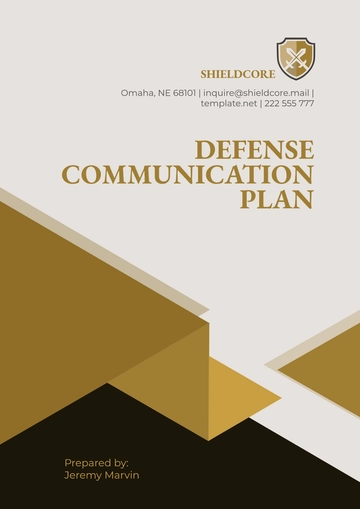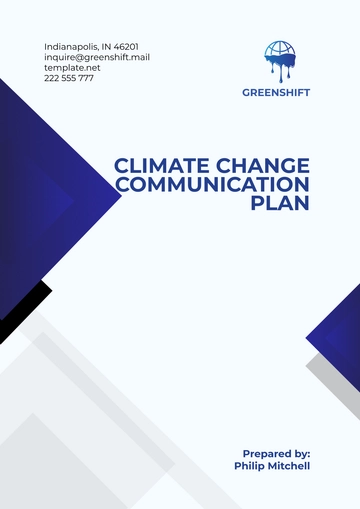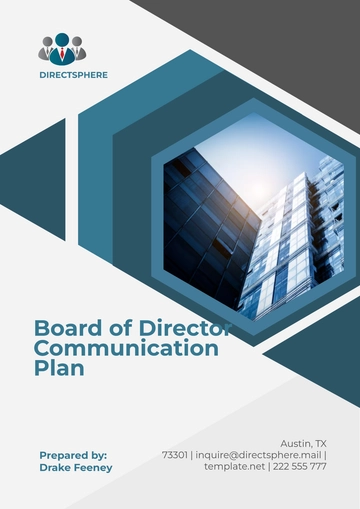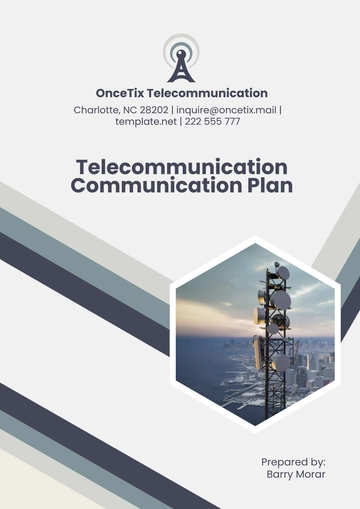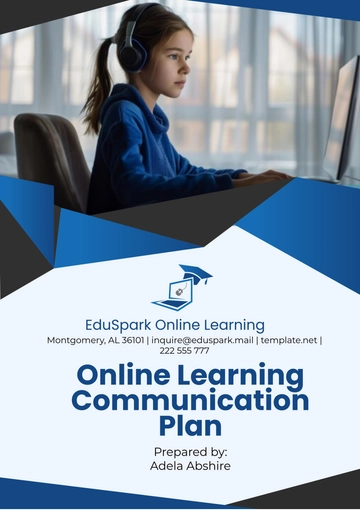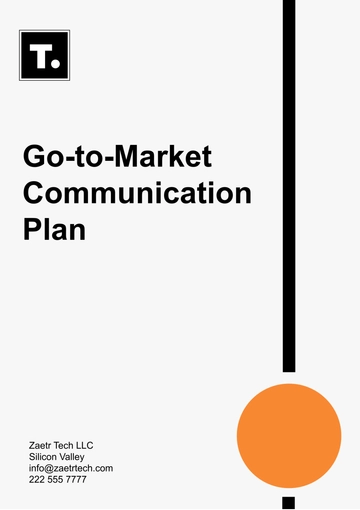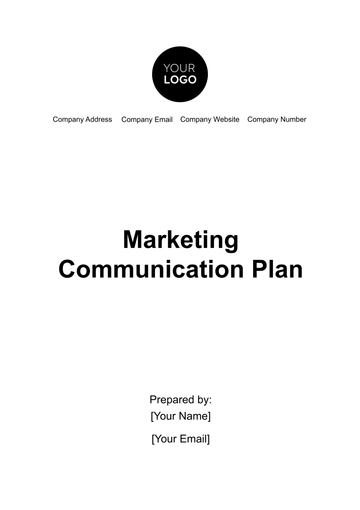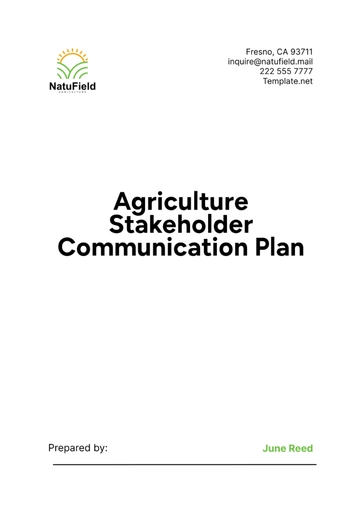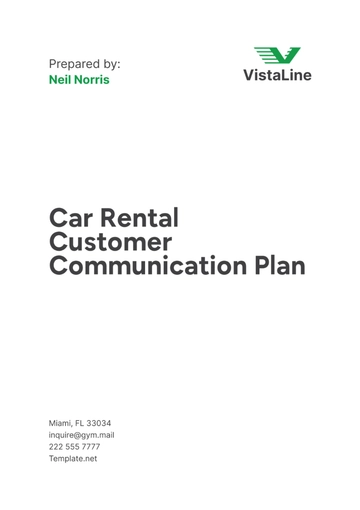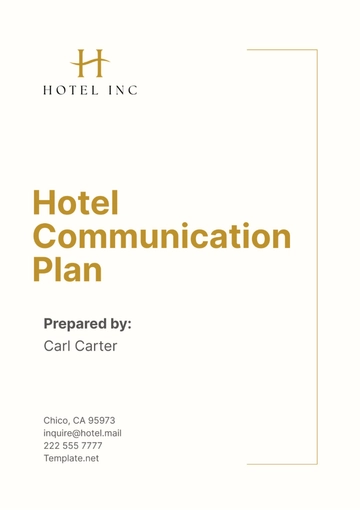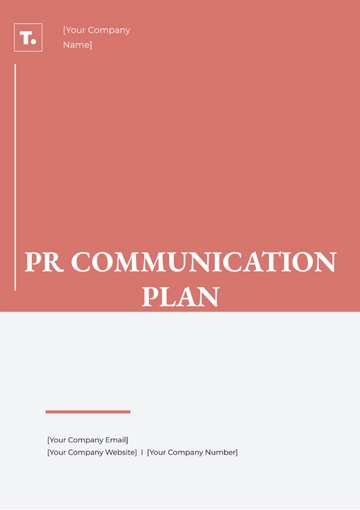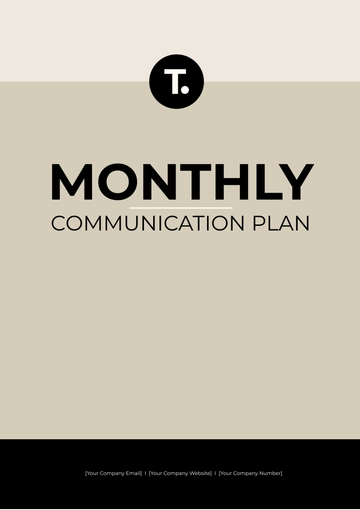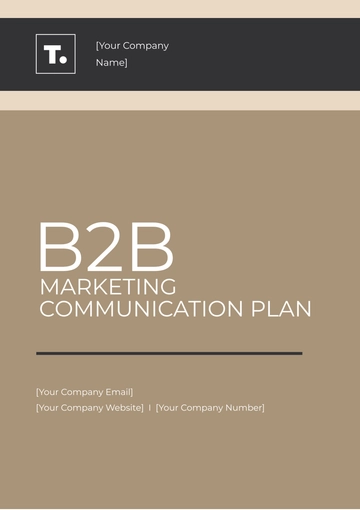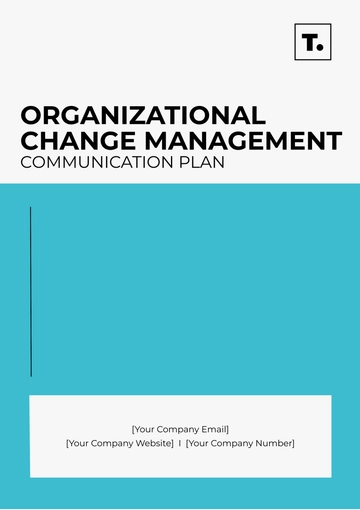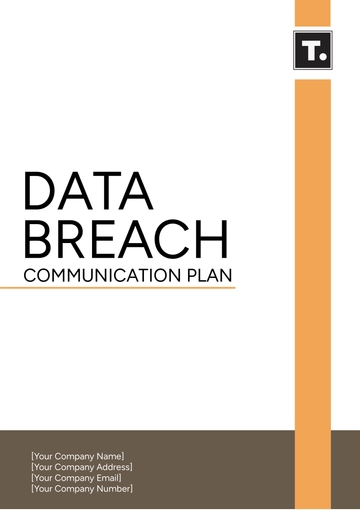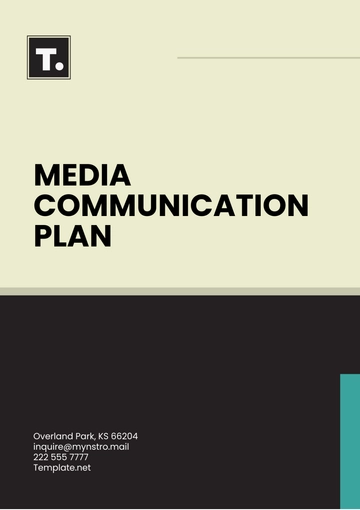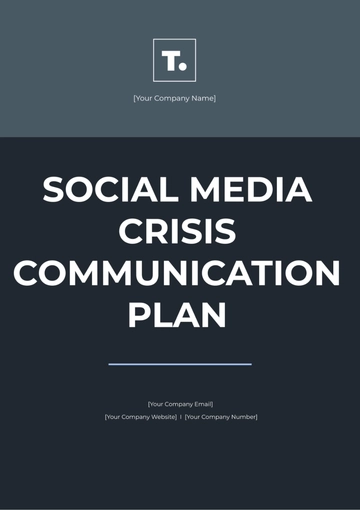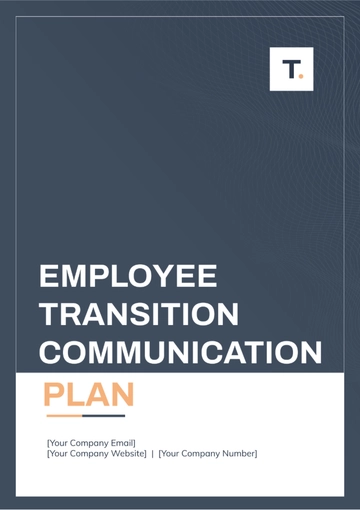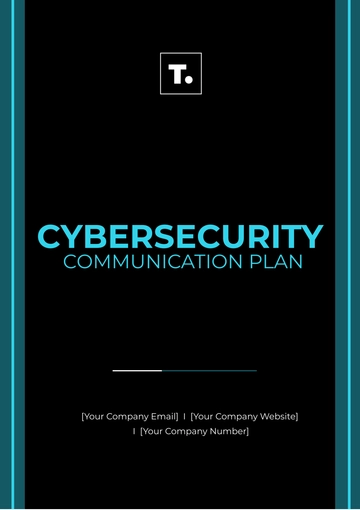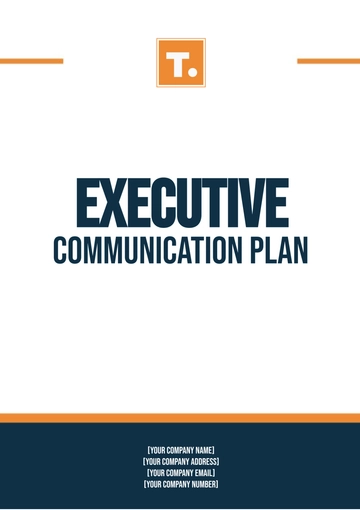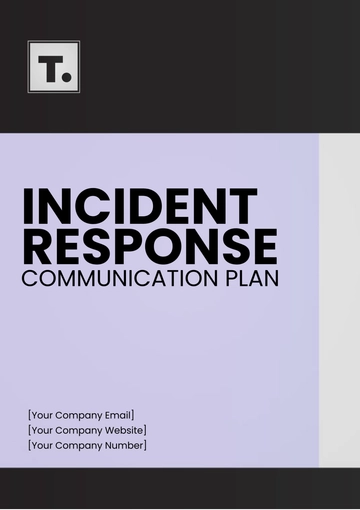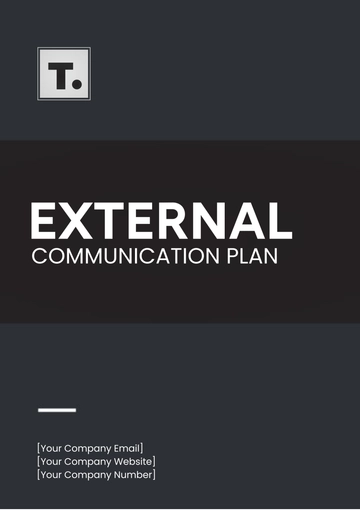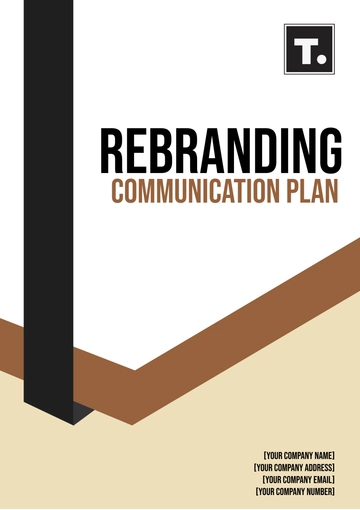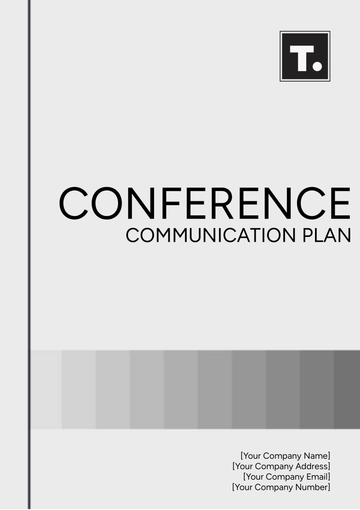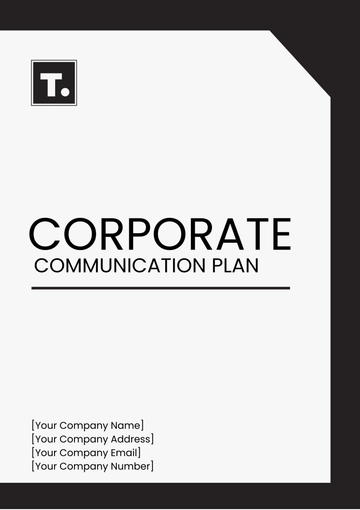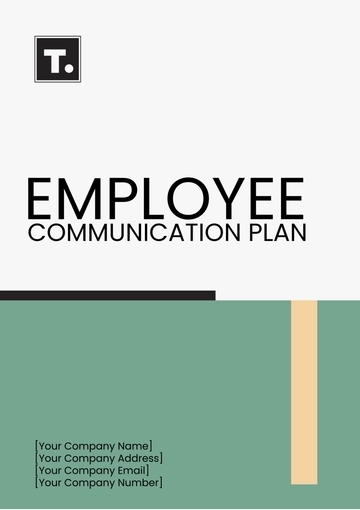Free Administration Comprehensive Communication Plan
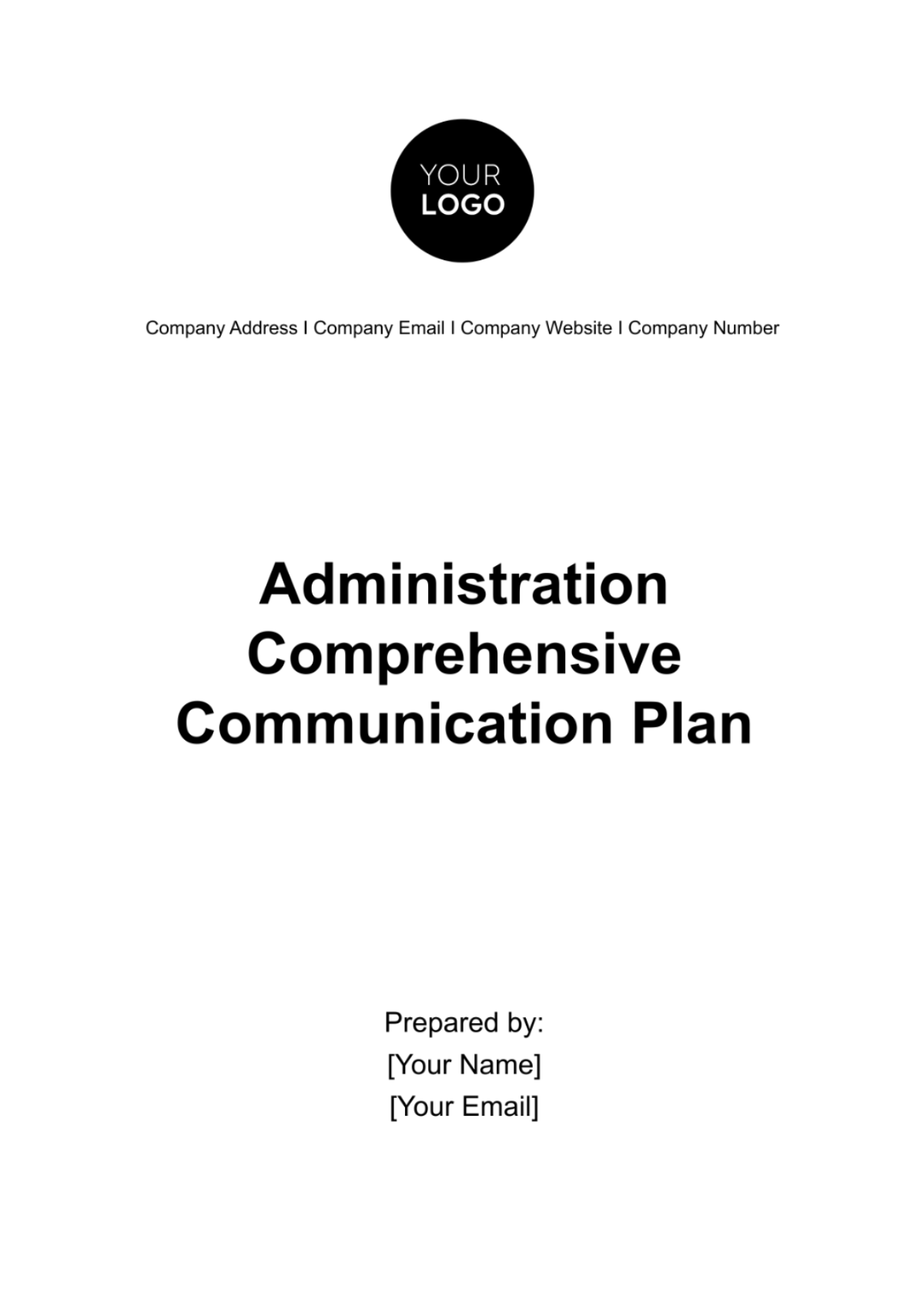
I. Communication Objectives
The cornerstone of [Your Company Name]'s Administration Comprehensive Communication Plan is to significantly enhance the visibility and effectiveness of our administrative operations. This initiative is meticulously crafted to not only improve internal cohesion among our team members but also to fortify our relationships with key external stakeholders. At the heart of this strategy is the intention to amplify the frequency and consistency of our communications.
Through deliberate and thoughtful communication, we aim to deepen every employee's understanding of our strategic goals, thereby aligning efforts and fostering a unified pursuit of these objectives. This endeavor is crucial for empowering our workforce with the knowledge and context needed to contribute meaningfully to our mission.
Furthermore, by engaging our external stakeholders more effectively, we aspire to elevate their level of involvement and investment in our journey. Whether it's sharing insights into our business strategies, celebrating milestones, or transparently navigating challenges, our goal is to cultivate an environment of mutual trust and respect. This holistic approach to communication underscores our commitment to transparency and accountability, serving as the foundation upon which we build stronger, more meaningful connections with all our stakeholders.
II. Stakeholder Analysis
To effectively communicate, understanding the diverse needs and preferences of our stakeholders is paramount. The following table offers a comprehensive overview of our key stakeholder groups, their levels of interaction with our organization, specific communication requirements, primary concerns, and preferred methods of communication.
Stakeholder Communication Analysis Table
Stakeholder Group | Interaction Level | Communication Requirement | Key Concerns | Preferred Method of Communication |
|---|---|---|---|---|
Employees | High | Regular updates, transparency | Business performance, job security | Email, Team meetings |
Customers | High | Product/service updates, marketing communication | Product quality, service level | Direct mails, Social media |
Suppliers | Medium | Contract discussions, market shifts | Timely payments, contractual obligations | Formal letters, Phone calls |
Investors | Low | Quarterly results, organizational changes | Business profitability, investment return | Official website, Annual reports |
Government | Medium | Regulatory compliance, licensing | Legal compliance, taxes | Formal presentations, Official letters |
Understanding the unique dynamics and expectations of each stakeholder group allows us to tailor our communication strategies effectively, ensuring that messages are not only received but resonate deeply with the intended audience.
Following the stakeholder analysis, it's clear that our communication efforts must be multi-faceted and adaptable to meet the varying needs and preferences of our diverse audience. For instance, the high interaction level with employees and customers necessitates regular, transparent communication channels like emails, team meetings, direct mails, and social media platforms. These methods allow for real-time updates and foster a sense of inclusivity and belonging among these groups.
Conversely, with stakeholders such as investors and the government, where the interaction level may be lower but the need for detailed and formal communication is critical, our strategy shifts towards more structured formats like official websites, annual reports, and formal presentations. This ensures that our communication is both appropriate and effective, addressing the specific concerns and requirements of each group.
The underlying goal of tailoring our communication approach is to ensure that every stakeholder, regardless of their interaction level, feels valued and informed. This strategic differentiation in communication methods not only addresses the unique concerns and preferences of each group but also enhances the overall effectiveness of our communication plan.
By fostering an environment where transparency, accountability, and mutual respect are paramount, we lay the groundwork for a more engaged, informed, and cohesive stakeholder community. This, in turn, strengthens our organization's reputation, trustworthiness, and success in achieving its strategic goals. Through continuous evaluation and adaptation of our communication strategies, [Your Company Name] remains committed to building and maintaining strong, productive relationships with all our stakeholders, paving the way for shared success and growth.
III. Message Creation
The creation of compelling and impactful messages forms the bedrock of [Your Company Name]'s communication strategy. Our dedication to preserving the integrity of our brand is reflected in our commitment to developing messages that are not only clear and concise but deeply resonant with the values and concerns of our diverse stakeholder groups. This process involves a meticulous blend of data-driven insights to ensure relevance, the incorporation of relatable stories to foster connection, and the adoption of an empathetic tone to genuinely engage our audience.
To achieve this, our message creation process will:
Utilize Data-Driven Insights: By analyzing market trends, customer feedback, and internal performance metrics, we can tailor our messages to address current realities and anticipate future needs.
Incorporate Relatable Stories: Storytelling is a powerful tool for emotional engagement. Our communications will feature narratives that highlight our successes, challenges, and the tangible impacts of our work on individuals and communities.
Adopt an Empathetic Tone: Understanding and reflecting the emotions and experiences of our stakeholders will be central to our messaging. This empathetic approach ensures our communications are received as genuine and caring, reinforcing trust and loyalty.
IV. Communication Channels
In today's fast-paced and digitally connected world, the effective delivery of messages necessitates a multifaceted channel strategy that caters to the varied preferences of our stakeholders. [Your Company Name] will leverage a comprehensive mix of channels to ensure broad reach and engagement:
Digital Platforms: Email and social media will serve as primary channels for timely, cost-effective, and wide-reaching communications. These platforms enable us to tailor content to specific audiences and engage in real-time interactions.
Traditional Media: Press releases and print publications will be utilized to convey formal announcements and in-depth reports, providing a reliable source of information for stakeholders who prefer traditional media outlets.
Personalized Methods: Webinars, podcasts, and direct engagement through meetings and phone calls will allow for deeper, more personal connections with our audience, facilitating discussions and feedback in a more intimate setting.
V. Communication Frequency
Balancing the frequency of communications is crucial to keeping stakeholders informed and engaged without causing information fatigue. [Your Company Name]'s approach will be thoughtful and strategic:
Employees: Daily updates via intranet postings, emails, or brief meetings will keep our team informed about internal developments, fostering a sense of inclusivity and alignment with our goals.
Investors and External Stakeholders: Quarterly newsletters, annual reports, and regular updates through our official website will provide comprehensive insights into our performance and strategic direction, tailored to their interest in our long-term success.
VI. Feedback Mechanisms
Dialogue is at the heart of effective communication. [Your Company Name] recognizes the importance of two-way interactions and will implement various mechanisms to gather and respond to feedback:
Surveys and Feedback Forms: Regularly distributed surveys and feedback forms will solicit input on our services, communication effectiveness, and stakeholder needs.
Inquiry Emails and Social Media Engagement: Dedicated channels for inquiries and active engagement on social media platforms will encourage open dialogue, allowing stakeholders to share their thoughts and concerns directly.
VII. Crisis Communication Plan
In the event of a crisis, timely, transparent, and responsible communication is paramount to mitigating impact and preserving our reputation. [Your Company Name]'s crisis communication strategy includes:
Immediate Response Protocols: A designated crisis communication team will be tasked with initiating an immediate response, ensuring that accurate information is disseminated quickly to prevent misinformation.
Clear and Accurate Information Dissemination: Our communications will focus on providing clear, factual, and concise information to all stakeholders, outlining the nature of the crisis, the steps being taken to address it, and any implications.
Accountability Measures: We will openly acknowledge any mistakes and take responsibility, demonstrating our commitment to transparency and ethical conduct.
Proactive Steps for Resolution: Our communications will not only focus on the immediate response but also outline our plans for resolving the crisis and preventing future occurrences.
By implementing these strategies, [Your Company Name] aims to build a robust communication framework that not only supports our current needs but is also adaptable to future challenges. This comprehensive approach ensures that we maintain an open, transparent, and engaging dialogue with all our stakeholders, reinforcing our commitment to excellence and mutual success.
VIII. Plan Evaluation
The effectiveness of [Your Company Name]'s communication plan is not static; it requires ongoing scrutiny to ensure it meets and surpasses our stakeholders' expectations. Regular evaluations are thus an integral component of our strategy, serving as a mechanism to measure the impact of our communications across various parameters. These include the clarity of our messages, the level of stakeholder engagement, and the nature and utility of the feedback we receive.
Our evaluation process will encompass:
Quantitative Analysis: Utilizing metrics such as open rates, click-through rates on digital communications, and attendance at webinars and meetings to gauge the reach and engagement levels of our communications.
Qualitative Analysis: Gathering insights through stakeholder surveys, feedback forms, and direct interactions to assess the resonance and relevance of our messages.
Benchmarking: Comparing our communication performance against industry standards and best practices to identify areas of excellence and opportunities for improvement.
This rigorous evaluation framework will enable us to continuously refine our communication strategies, ensuring they are not only effective but also innovative and forward-thinking.
IX. Communication Training
At [Your Company Name], we recognize that the quality of our communications is directly influenced by the skills and proficiency of our team members. To this end, we are committed to providing comprehensive training programs that cover the full spectrum of communication skills, from message crafting and delivery to managing stakeholder feedback and navigating difficult conversations.
Our training programs will include:
Workshops and Seminars: Led by experts in communication and public relations to provide our team with the latest strategies and tools for effective communication.
Role-Playing Exercises: To practice real-life scenarios, helping our team members develop the confidence and skills to handle various communication challenges.
Feedback and Coaching Sessions: Offering personalized feedback and coaching to team members to help them refine their communication styles and techniques.
By investing in the development of our team's communication skills, we aim to cultivate a culture of excellence in communication that permeates every level of our organization.
X. Plan Update and Revision
As [Your Company Name] evolves, so too must our approach to communication. The dynamic nature of our business environment, coupled with the ever-changing needs and expectations of our stakeholders, necessitates a flexible and adaptable communication plan. To this end, we will establish a regular review cycle to assess the suitability of our current communication strategies and make necessary adjustments.
This process will involve:
Stakeholder Feedback: Actively seeking and incorporating feedback from our stakeholders to ensure our communications continue to meet their needs.
Market and Industry Trends: Monitoring changes in communication technologies, platforms, and best practices to keep our strategies current and effective.
Internal Assessments: Regularly reviewing our communication outcomes and the efficiency of our processes to identify areas for improvement.
By maintaining a commitment to continual improvement, [Your Company Name] will ensure that our communication plan remains robust, responsive, and aligned with our strategic objectives.
In summary, [Your Company Name]'s comprehensive communication plan is designed to be a living document, one that adapts and grows in tandem with our organization. Through meticulous planning, regular evaluation, dedicated training, and ongoing revision, we are poised to foster a culture of transparency, inclusivity, and engagement. This commitment to excellence in communication is pivotal to strengthening our relationships, enhancing our organizational culture, and advancing our business goals, supported by the unwavering commitment of our internal and external communities.
- 100% Customizable, free editor
- Access 1 Million+ Templates, photo’s & graphics
- Download or share as a template
- Click and replace photos, graphics, text, backgrounds
- Resize, crop, AI write & more
- Access advanced editor
Maximize communication effectiveness across your organization with Template.net's Administration Comprehensive Communication Plan Template. Our intuitive AI editor empowers customization to suit your unique needs, ensuring seamless coordination and clarity. Streamline your communication strategies effortlessly and enhance productivity. Elevate your administration with a robust plan tailored to your business objectives.
